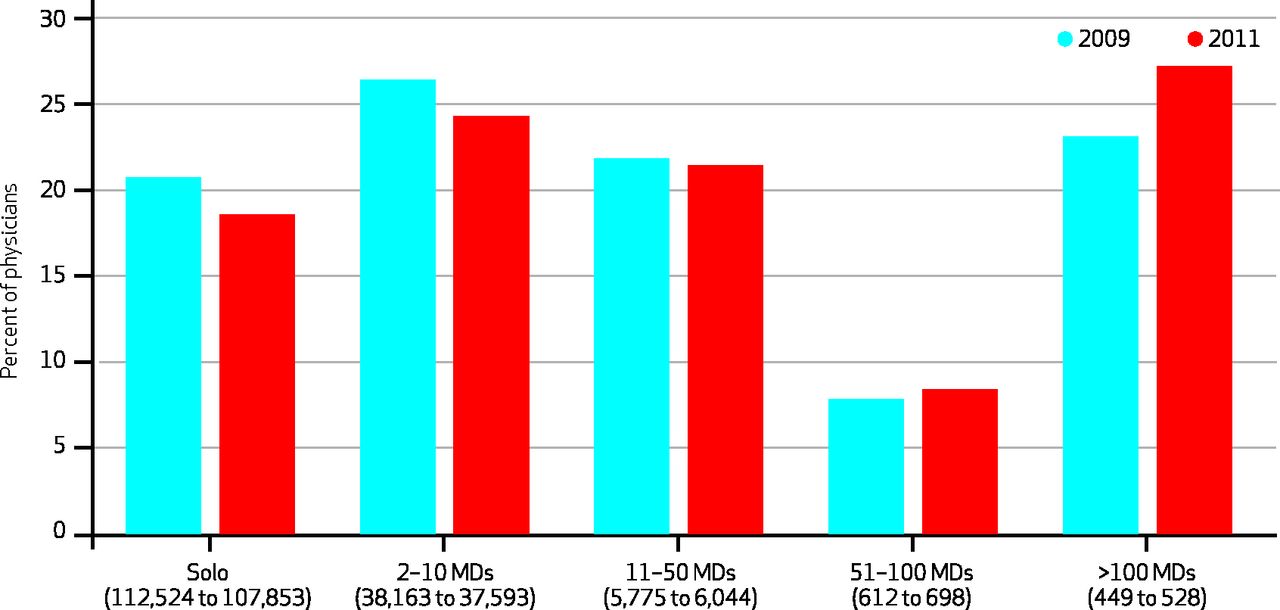I teach an undergraduate health policy class at Duke, populated in part by ambitious premeds. (Sorry for that last bit of redundancy.) One of the things I like to emphasize in the class is the kind of medical practice milieu students can expect to encounter when they finally become physicians. That’s a good way to get them motivated to understand Medicare and Medicaid and the like.
Very few things I tell them about resonate more than the increasing prevalence of large group practices, and the correspondingly diminishing frequency of solo practitioners. I tell them not to expect to hang up a shingle on their own when they finish their clinical training.
Some new data showed just how quickly this change is occurring. Over the course of just three years, you can see how quickly solo practice is declining, and how rapidly extremely large practices – of more than 100 physicians – are growing:
 As someone who trained at the Mayo Clinic, and benefited greatly from being surrounded by other clinicians, I think this is largely a good trend. I think there are many advantages to both physicians and patients in having physicians work in larger groups. The main downside, perhaps, is that such practices are hard to pull together in rural areas. And the growth of such practices might force patients to drive further to receive medical care. But overall, I think this is a trend that is both unstoppable and, probably, for the better. (Click here to view comments)
As someone who trained at the Mayo Clinic, and benefited greatly from being surrounded by other clinicians, I think this is largely a good trend. I think there are many advantages to both physicians and patients in having physicians work in larger groups. The main downside, perhaps, is that such practices are hard to pull together in rural areas. And the growth of such practices might force patients to drive further to receive medical care. But overall, I think this is a trend that is both unstoppable and, probably, for the better. (Click here to view comments)
